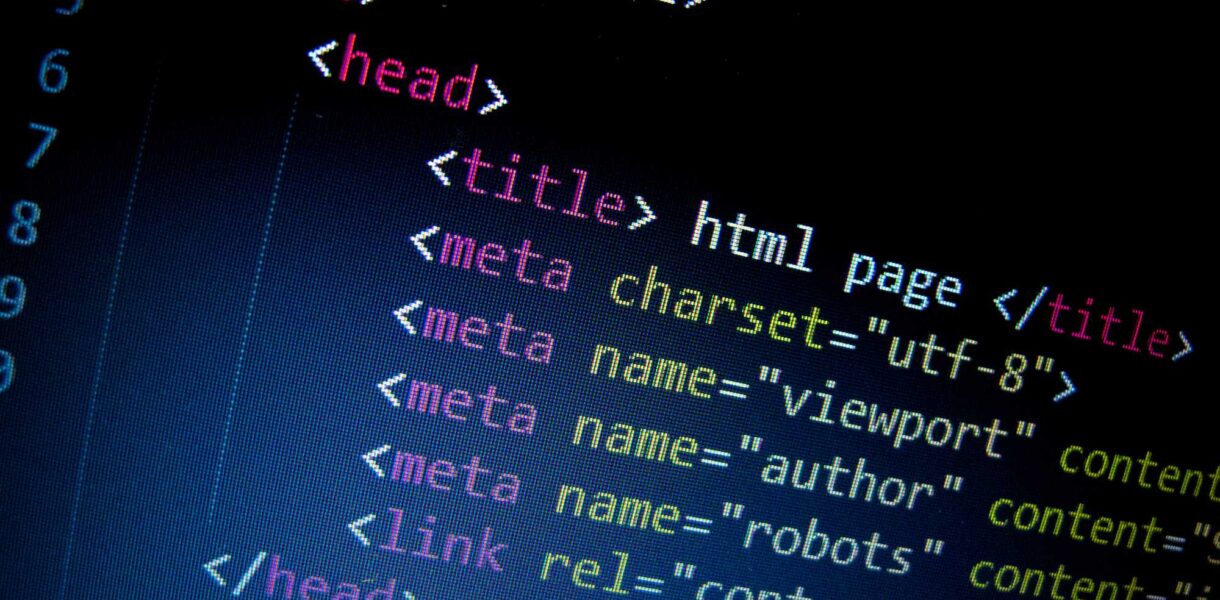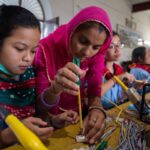

Our society is no stranger to the inequalities that subsists in our education system owing to access, quality & affordability. The Coronavirus induced lockdown has further aggravated existing inequalities by restricting online education to financially well off students who have the access to the internet and digital devices. The closure of educational institutions due to the COVID-19 pandemic has adversely affected the right to education of millions of children all over the country. The imposition of the nationwide lockdown has pushed the inequalities to a further deeper end.
After the lifting of lockdown various State Governments and schools have taken steps for imparting education by adopting recourse to digital mode. However, the majority of the states have failed to acknowledge the digital divide that exists within India because of the non-availability of digital devices or the internet to a large portion of society. This economic divide makes access to online education unavailable to the majority of the children belonging to the economically and socially weaker sections. It is pertinent to note that education of children in the age group of 6 to 14 years i.e. elementary education is a constitutional mandate under Article 21A[1] of the Constitution of India[2] and has been given effect under the Right of Children to Free and Compulsory Education Act, 2009.[3]
The adoption of e-learning practices has raised a reasonable number of concerns because of the unequal access and the further broadening of the socio-economic divide. As the traditional classroom learning has been put to stop, the unconventional way of online education is possible only for those privileged students who can afford and access digital education.
An Education Policy for the Elites
To ensure education continuity and a push for online learning, on 14th July 2020, the Ministry of Human Resource Development (MHRD) issued guidelines for online education called “Pragyata Guidelines for Digital Education”[4]. Although the guidelines deal with various objects, this article focuses on the issues of children belonging to households having no digital device at all. The guidelines state that “the goal is not to try and recreate face-to-face (F2F) classrooms over the internet. Anytime, anywhere, online and blended learning which provide opportunities for learners to work more independently, expand their agency, intellectual horizon, learn to use tools and strategies that otherwise may not be feasible in classrooms for teaching-learning and assessment.”[5]
The guidelines propose three modes of education online, partially online and offline. The “Offline Mode Of Education” is for those who don’t have any internet facilities. With regards to the availability of digital infrastructure, the guidelines classify Indian households into six categories[6] as follows:
- Households with computers, laptops, smartphones with 4G internet connection
- Households with Smartphones with 4G internet connection
- Households with Smartphone but limited or no internet access
- Households with Television with cable connection or DTH
- Households with Radio set or a basic mobile phone with FM radio, and
- Households with no digital devices at all
In the offline mode of education, the e-learning resources are shared through Television or Radios. But what if the children have no Television or Radio sets at their homes? The guidelines give an irrational suggestion that such students can use the Community Television/Radio set at panchayat offices or public places. This kind of alternative strikes at the very purpose of closing down of schools and keeping the children at their homes. Using public places for education is an unsafe option and defeats the raison d’etre of closing schools.
The guidelines provide an “exemplar of online learning” which advises Teachers to conduct a brief survey with the children via mobile about their access to digital devices.[7] It provides, for example, if the teachers find:
- 15 Households have a Television, Smartphone with internet connectivity and also a Laptop,[8]
- 10 Households have a Smartphone with internet connectivity and a Television but no Laptop,[9]
- 4 Households have a basic mobile,[10]
- 1 Household does not have even a mobile.[11]
The teacher may make certain arrangements, for example, concerning a child falling within the fourth category i.e. the child belonging to a household having not even a mobile, it says that the teachers may explore contacting them via the child’s friends.[12] And after getting the contact of a student residing nearby, the teacher may explore communication channels with the child such as identifying his/her accessibility to a mobile belonging to a neighbour.[13] It is again an implausible suggestion which does not sufficiently deal with the problems faced by the aforesaid category of students.
Although there is an acknowledgement of the fact that there are households which have no digital devices or access to the internet, there is a failure to suggest any practical or adequate recommendations and solutions. This is deepening the inequalities which exist between those having access to digital resources and those who are suffering due to lack of sufficient means. Unless adequate measures are taken, there would be no end to the suffering of the disadvantaged children.
Furthermore, a PIL[14] a been filed in the Supreme Court seeking directions to the Union to formulate a uniform education policy in every State to curb discriminatory practices adopted during the COVID-19 crisis and to ensure participation of all children including children belonging to weaker sections of society. It also seeks formulation of uniform policies on the state level for both Government and private schools regarding the mode of education to minimize the digital divide being created by the education practices followed by various states and Union Territories.
Making Mockery of Right to Education
The Hon’ble Supreme Court of India in Mohan Jain v State of Karnataka[15] held that the Right to free education is a Fundamental Right under Article 21 of the Indian Constitution. The scope of the right to education was slightly restricted by the Apex Court in Unni Krishna v. State of Andhra Pradesh[16] wherein it was held that the right to free education after the age of 14 years will depend on the financial capacity of the government[17].
One may argue that providing digital devices to students is not economically feasible. However, if various states governments can mention free laptops and scooters in their manifestos, there is no reason to believe that an effort in this direction cannot be made. Perhaps, this might be one of the best ways to utilize the fund present (IF ANY) in “PM CARES FUND” or similar shady trust accounts made by the State Governments.
The advisory guidelines issued by the Government shows its indifference towards the students coming from a financially poor background. When considering the application of the right to education as a fundamental right during the pandemic, we must understand that digital devices and internet access are the sole way to attain education. The Supreme Court in Bhadnwa Mukti Morch v UOI[18] showed an inclination towards providing education to financially poor students even it comes at the expense of state inconvenience[19]. In this case, the Apex court directed the government to frame special schemes to ensure children employed in factories or industrial works are provided access to education even if the class are conducted near or inside the factory. Therefore, the Government must come out with some solutions to ensure that children from financially poor background don’t become a victim of circumstances.
Conclusion
Instead of providing such vague and unreasonable suggestions, the government needs to come up with concrete and effective alternative strategies to address the plight of students having no access to the internet and digital devices. It must take immediate steps to provide digital means to all such students. This category of students requires the immediate attention of the authorities.
About the Author
Manisha Aswal is a law student currently pursuing LL.M from NALSAR, Hyderabad.
Aditya Joshi is a final year law student from Faculty of Law, University of Delhi.
Endnotes
- Article 21 states, “The State shall provide free and compulsory education to all children of the age of six to fourteen years in such manner as the State may, by law, determine.” ↑
- hereinafter “Constitution”. ↑
- hereinafter “RTE Act” came into force on 1st April, 2010. ↑
- hereinafter “guidelines”. ↑
- Section-I: Understanding Digital/ Online Education of guidelines, https://www.education.gov.in/sites/upload_files/mhrd/files/pragyata-guidelines_0.pdf ↑
- ibid ↑
- ibid ↑
- ibid ↑
- ibid ↑
- ibid ↑
- ibid ↑
- ibid ↑
- ibid ↑
- Good Governance Chambers v. Union of India filed on 24th July, 2020. ↑
- (1992) 3 SCC 666 ↑
- (1993) 1 SCC 6 ↑
- ibid ↑
- (1991) 4 SCC 177 ↑
- ibid ↑





Very informative and amazing writeup…… Carry on writing such useful stuff.
Very informative writeup…… Carry on writing such useful stuff.
Thank you for your feedback
Since the Covid-19 pandemic has distributed the normal lifestyle of people across the globe, the virtual world has come to the rescue. Amongst many Institutions school have also shifted their base to virtual platform to conduct classes online. Consequently, catering to the needs of all stages of education from pre-primary to university level online education has emerged as an alternative to ordinary face to face classes. Moreover efforts are being made by both Government and non-government organisation and edtech companies to support the school system to make a smooth transition to the virtual world upskilling and motivating teachers, organising counselling session for stakeholders such as teachers parents and students are some of the important measure taken by the administration in the recent past. Both the Central and well as state government will have to make a road map not only for labourers and Employment but for the education for their childrens too and the right of Education Act 2009 mandate to provide equitable quality education to all children from 6 to 14 years of age. This platform is the alarming fact that the government is oblivious to the stark realities of social inequalities which are proving to be the greatest barrier to access online education. These digital initiatives are perpetuating the hegemony of Elite schools over the education system, resulting in the digital divide between rural and urban and rich and poor.
Yes, absolutely right!
Great Article Manisha! Really loved the points you made about mockery of right to education! It shows how they’re treating the under privileged and disregarding their needs just to fulfil their ever changing agenda’s! Kudos! Looking forward to the next article!
Thank you for feedback
Have you ever thought about writing an e-book or guest authoring on other blogs?
I have a blog based on the same ideas you discuss and would really like to have you share some stories/information. I
know my subscribers would enjoy your work. If you are even remotely interested, feel free to send me an e-mail.
This is my first time go to see at here and i am actually happy to read all at one place.